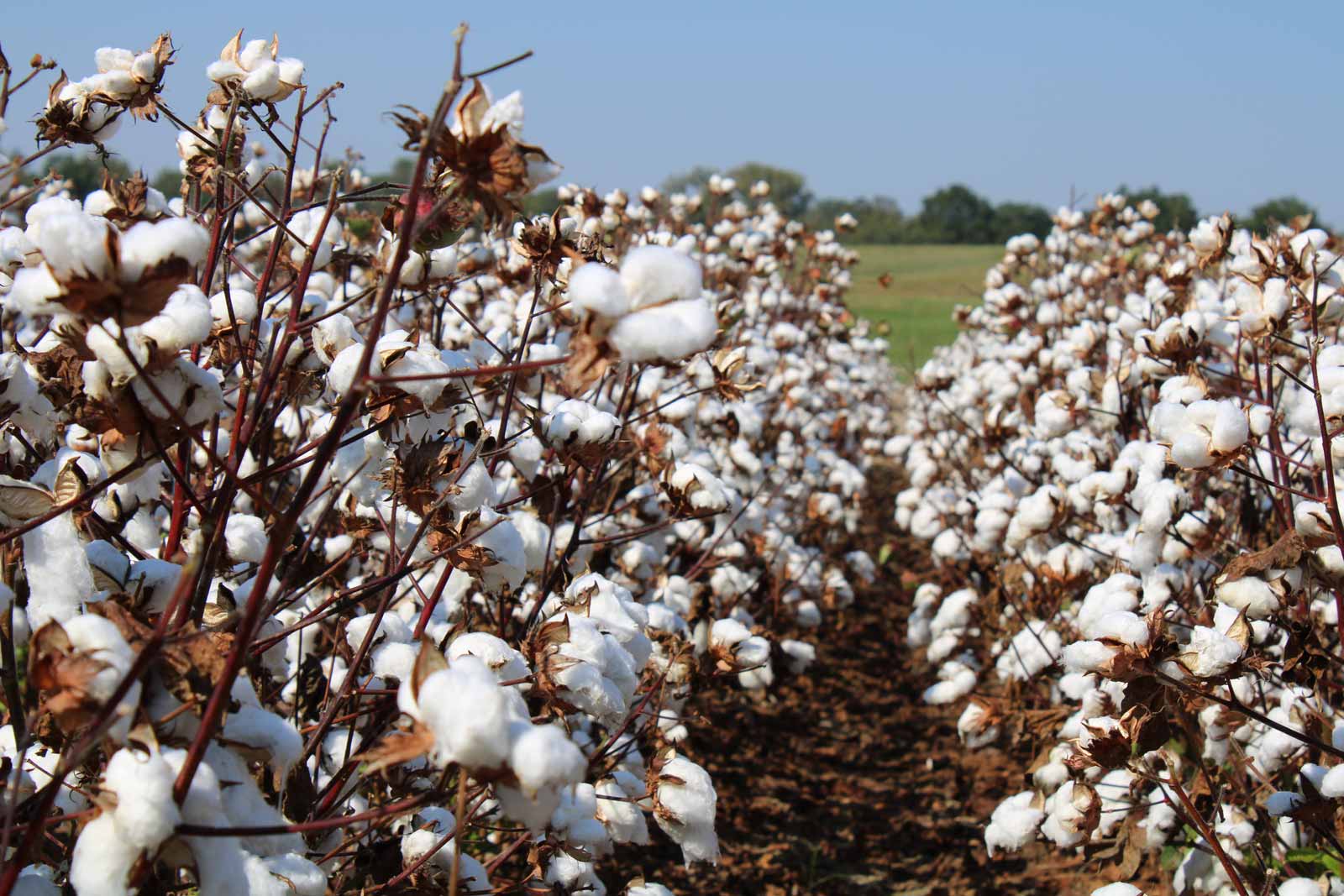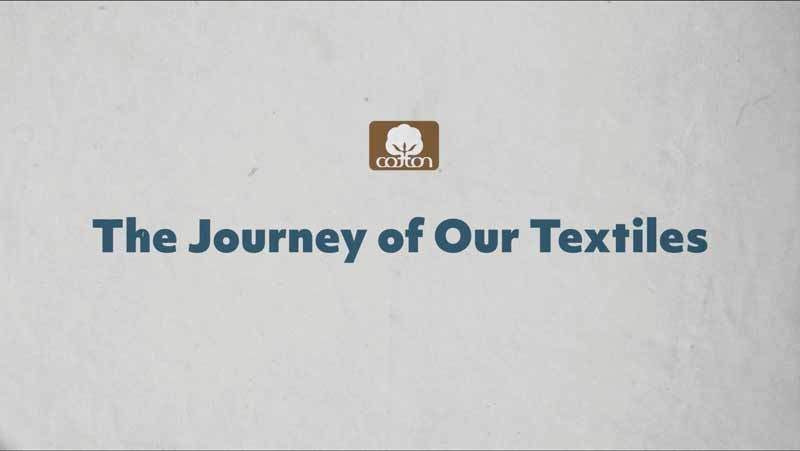- Why it matters: PFAS and formaldehyde restrictions are tightening; brands need safer, high-performance finishes that scale—and a credible circularity story.
- Driving the news: Cottonseed oil is emerging as a bio-based platform for formaldehyde-free wrinkle resistance and fluorine-free (PFAS-free) water repellency.1
- By the numbers: ~1.6 lb seed per 1 lb fiber2; 100% cotton fibers biodegrade 50–90% in 28-102 days in water34; ~2.5M tons ginning biomass/year → bioenergy/biochar with ~24% carbon sequestration potential.56
- What brands can do now: Explore with mills the potential for cottonseed-oil-derived finishes; require fluorine-free and formaldehyde-free verification; pilot on core styles and pair claims with fiber recycling/biodegradation and biochar initiatives.1 3 4 5 6
The apparel and textiles industries are under pressure to advance circularity, remove chemicals of concern, and cut waste. Cotton offers a rare, holistic answer. Beyond its highly recyclable, rapidly biodegradable fiber, new research is transforming cottonseed oil into safer, bio-based finishing agents that may replace formaldehyde-based resins and per- and polyfluoroalkyl substances (PFAS).1 That progress sits alongside advances in recycling, composting, bioenergy, and biochar—together forming a practical blueprint for circularity grounded in a single crop.
Cottonseed Oil: A Platform for Safer Textile Chemistry Wrinkle Resistance
Researchers at North Carolina State University are developing an effective, formaldehyde-free wrinkle-resistant finishes using cottonseed oil derivatives—delivering smoothness and appearance retention while helping brands meet stricter chemical safety requirements.1
Fluorine-Free Water Repellency (PFAS-Free) Parallel research is exploring cottonseed-oil-based chemistries to achieve durable, fluorine-free water repellency.1 Early results are promising, pointing to performance without persistent chemicals of concern and aligning with tightening regulations.
The same feedstock is under evaluation for bio-based foams and thin films for packaging, expanding cottonseed oil’s utility across supply chains and demonstrating the breadth of whole-plant value.1
Why It Matters for Brands and Mills
Bio-based finishes derived from cottonseed oil can help future-proof assortments against evolving regulation, simplify chemical disclosures, and strengthen product narratives—without compromising performance. For mills, these potential alternatives create opportunities to differentiate with safer chemistry while aligning with customer requirements.
Fiber (Lint): Designed for Longevity and Return-to-Earth Pathways
Cotton fiber remains the backbone of the global textile market, prized for comfort, breathability, and durability—qualities that support long product lifespans and fuel reuse and secondhand markets. When a cotton product reaches end-of-life, its journey continues. In aquatic environments, 100% cotton fibers can biodegrade by 50–90% within 28-102 days—a rate similar to that of an oak leaf.3 4 This natural decomposition is a crucial defense against long-term pollution in waterways. For textiles that aren’t composted, 100% cotton products are well-suited to both mechanical and chemical recycling, enabling fiber-to-fiber pathways into new textiles, insulation, or other industrial goods.
Stalks, Stems, and Ginning Residues—Energy and Soil Health Loops Agronomic Value
Returning stalks and stems to the soil enriches organic matter, improves water retention, and contributes to carbon sequestration—core principles of regenerative agriculture.7
Bioenergy and Biochar
The ~2.5 million tons of biomass generated annually during U.S. cotton ginning can be processed into bioenergy.5 Through pyrolysis, cotton stalks can be converted into biochar—a stable, carbon-rich solid. When added to soil, biochar sequesters carbon for the long term and improves soil health and fertility. Cotton stalk biochar has a carbon sequestration potential of ~24%, outperforming many other agricultural residues.6 Further research and long-term investigations are needed to validate the impact of biochar application on soil health, plant productivity, and carbon sequestration.
Industrial Inputs From Co-products
Linters (short fibers), motes, and hulls—once considered waste—are now valuable inputs for paper, packaging, specialty cellulose, filtration media, and even U.S. currency.7 Australian researchers have also used cotton gin co-products to create biodegradable mulch films for agricultural use, which suppress weeds and then decompose naturally in the field.8 Continued research will be essential to determine the scalability and effectiveness of these innovations.
Animal Feed: Dairy Loop
Whole cottonseed is a protein- and fat-rich feed for livestock. More than 50% of the annual U.S. whole cottonseed supply is fed to dairy cattle,9 where it has been shown to enhance both milk production and fat content.10 This practice links the textile supply chain back to agriculture in a closed loop.
The Circularity Blueprint: One Crop, Multiple Value Streams
True circularity means designing waste out of the system from the very beginning. The cotton plant is a prime example of this principle in action. It is a zero-waste crop where each component has a purpose, creating multiple value streams that extend far beyond apparel. The potential reinvention of cottonseed oil as a platform for safer textile finishes sits alongside fiber’s recyclability and rapid biodegradation, nutritional innovations from seed, and carbon-storing biochar from stalks—together forming a tangible, scalable blueprint for a circular economy.
What Brands and Mills Can Do Now
- Learn more from suppliers about cottonseed-oil-derived finishes for wrinkle resistance and fluorine-free water repellency (PFAS-free), including their timelines for availability and scale-up.1
- Prioritize verification: request fluorine-free testing, formaldehyde-free claims substantiation, and applicable certifications or chemical conformance documentation.1
- Pilot at small scale: run A/B trials to compare hand, appearance retention, and durability through home-laundry cycles and abrasion testing.1 3 4
- Align storytelling with substance: pair safer-chemistry claims with fiber circularity and biomass-to-biochar initiatives to communicate a cohesive whole-plant narrative.3 4 5 6
- Build partnerships: engage mills, chemical suppliers, and recyclers early to coordinate finish selection, testing protocols, and end-of-life pathways for 100% cotton styles.
A Renewable Platform for a Circular Future
Cotton is far more than a fiber—it is a renewable, circular platform enabling safer chemistry, sustainable nutrition, renewable energy, and soil regeneration. By designing a system where every part of the plant has value, cotton provides a practical pathway for brands and retailers to meet rising sustainability standards, de-risk product portfolios, and deliver measurable impact. Starting with cottonseed oil as a bio-based platform for next-generation finishes, we can align performance with planetary health—from seed to finish and back to the soil.

Mary Ankeny, Vice President, Product Development & Implementation Operations
1. American Chemical Society. (2025, August). A potential green alternative to formaldehyde and PFAS in fabric finishing. https://www.acs.org/pressroom/presspacs/2025/august/a-potential-green-alternative-to-formaldehyde-and-pfas-in-fabric-finishing.html
2. Ledbetter, K. (2018, October). Protein derived from cottonseed for human nutrition one step closer to reality. AgriLife Today. https://agrilifetoday.tamu.edu/2018/10/16/protein-derived-from-cottonseed-for-human-nutrition-one-step-closer-to-reality/
3. Zambrano, M. C., Pawlak, J. J., Daystar, J., Venditti, R. A., Ankeny, M., & Goller, C. C. (2020). Aerobic biodegradation in freshwater and marine environments of textile microfibers generated during laundering. Marine Pollution Bulletin, 151, 110826. https://doi.org/10.1016/j.marpolbul.2019.110826
4. Zambrano, M. C., Pawlak, J. J., Daystar, J., Venditti, R. A., & Ankeny, M. (2021). Impact of Dyes and Finishes on the Aquatic Biodegradability of Cotton Textile Fibers and Microfibers Released on Laundering Clothes: Correlations between Enzyme Adsorption and Activity and Biodegradation Rates. Marine Pollution Bulletin 165: p. 112030. https://www.sciencedirect.com/science/article/abs/pii/S0025326X21000643?via%3Dihub
5. Maglinao, A. L., Jr., Capareda, S. C., & Nam, H. (2015). Fluidized bed gasification of high tonnage sorghum, cotton gin trash and beef cattle manure: Evaluation of synthesis gas production. Energy Conversion and Management, 105, 578–587. https://doi.org/10.1016/j.enconman.2015.08.005
6. Tao, Y., Feng, W., He, Z., Wang, B., Yang, F., Nafsun, A. I., & Zhang, Y. (2024). Utilization of cotton byproduct-derived biochar: A review on soil remediation and carbon sequestration. Environmental Sciences Europe, 36, Article 79. https://doi.org/10.1186/s12302-024-00908-7
7. Egbuta, M.A., McIntosh, S., Waters, D.L., Vancov, T., Liu, L. (2017). Biological Importance of Cotton By-Products Relative to Chemical Constituents of the Cotton Plant.
Molecules, 22(1), 93. https://doi.org/10.3390/molecules22010093
8. Cai, Z., Haque, A. N. M. A., Callahan, D. L., Dhandapani, R., & Naebe, M. (2024). Development of bio-composite mulch film from cotton gin wastes: Study of pesticide residue and outdoor stability and degradation. Science of The Total Environment, 948, 175004. https://doi.org/10.1016/j.scitotenv.2024.175004
9. Mullenix, M.K., Stewart Jr., R.L., Jacobs, J.L., Davis, D.L. (2022). Invited Review: Using whole cottonseed and cotton harvest residue in southeastern US beef cattle diets: Quality, intake, and changes in feed characteristics. Applied Animal Science, 38:447-455. https://doi.org/10.15232/aas.2022-02301
10. Bales, A. M., dos Santos Neto, J. M., & Lock, A. L. (2024). Effect of increasing dietary inclusion of whole cottonseed on nutrient digestibility and milk production of high-producing dairy cows. Journal of Dairy Science, 107:7798–7809. https://doi.org/10.3168/jds.2024-24787


